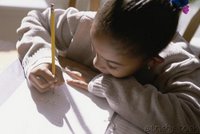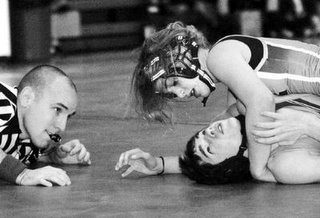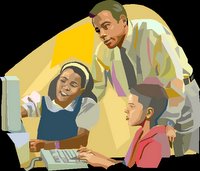 Low-income and children of color shortchanged in many states
Low-income and children of color shortchanged in many statesMost states significantly shortchange poor and minority children when it comes to funding the schools they attend, according to a report released today by the Education Trust.
Nationally, we spend about $900 less per pupil on students educated in our nation’s poorest school districts than those educated in the wealthiest. Worst yet, in some states, this funding gap exceeds $1,000 per pupil.
The problem is widespread. In 27 of 49 states studied, the school districts serving the highest concentrations of poor students spend less per pupil than the lowest-poverty districts. The dollar figures in this analysis were not adjusted for the extra costs of educating low-income students.
The Education Trust also analyzed funding data by applying a widely used 40-percent adjustment to account for the additional costs of educating low-income students.
When this adjustment is applied, the funding gap between high- and low-poverty districts grows to more than $1,400 per student, and the number of states with funding inequities increases to 38 states.
Under-funding is also pervasive in districts educating the most minority students: In 30 states, the school districts serving concentrations of minority students spend less per pupil than the districts that educate few children of color; when the numbers are adjusted to account for the extra costs of educating the low-income students these districts serve, 35 states have minority funding gaps.
This annual analysis of school funding focuses on the money that state and local governments provide to school districts by looking at data for the 2002-03 school year, the latest year for which such financial data are available. The report focuses on state and local policies because these jurisdictions, rather than the federal government, control more than 90 percent of the dollars received by public schools, and they bear the lion’s share of the responsibility to close these gaps.
“In far too many states, we see once again that the children who need the most from our schools receive the least,” said Ross Wiener, policy director of the Education Trust. “While the federal government should spend more on education, this can’t be used as an excuse for states to ignore their discriminatory education funding policies.
"The fact that we still are talking about funding gaps shows a lack of political will to do what’s right.”
The Education Trust report acknowledged that providing more money to schools does not, by itself, guarantee gains in student achievement. Rather, the money must be spent wisely on resources proven to increase student learning, such as hiring qualified teachers and providing extra support to struggling students.
“This nation has embraced the goal of ensuring that every child – no matter their color, family background, or socioeconomic status – will receive an education that allows them to compete in a rapidly changing global economy,” said Kati Haycock, director of the Education Trust.
“Indeed, there are districts and schools all across the nation that are educating students to high-levels daily without additional dollars,” Haycock said. “But if we are to truly fulfill our promise to educate all students, we need to ensure that school systems have the resources they need to get the job done. We’ve got to abandon school-funding practices that consistently give poor and minority kids less than their fair share.”
Some states, like Illinois, stand out for being particularly unfair when it comes to funding schools. Illinois continues to have one of the biggest funding gaps in the country, at a whopping $2,065 per student, without adjusting for the additional costs of educating low-income students. And the state has made no progress in closing this gap since at least 1997.
New York also stands out for neglecting to fairly fund poor and minority school districts. New York spends $2,280 less per student in its poorest districts than its does on students educated in its wealthiest school districts. Even after New York was ordered to deal with these funding gaps, policymakers have failed to take action.
“Even relatively small gaps add up to big inequalities for poor and minority children,” said Haycock. Take for example, a state like Colorado, which has a gap of $101 per student between its highest- and lowest-poverty districts. If Colorado closed its funding gap, a typical low-income high school of 1,500 students would have an additional $151,500 to fund school improvements.
Some states are taking a serious look at their funding gaps and are working to close them, the report notes. Maryland, for example, appointed a bipartisan commission to examine education funding. The commission recommended large infusions of new money in the highest-poverty school districts, and the state’s political leaders are working to carry out those recommendations.
“Shortchanging the educational needs of students growing up in poverty has always been immoral,” Haycock said. “But these deep inequities in resources are absolutely untenable in the face of the demands of the 21st-century economy. How can we, as a nation, profess to care so much about poor kids and kids of color and then give them less of everything they need to succeed in school?
“Fortunately, policymakers in some states are making the right choices and putting money behind their convictions,” she said. “But, as this report shows, most still have a long way to go.”
The Education Trust's 11-page special report is available online as a PDF document. You must have Adobe Acrobat Reader to access the report. If Adobe Acrobat Reader is not installed on your computer, just go to Adobe.com for a free download.

 Taking a closer look at 'silent victimization'
Taking a closer look at 'silent victimization' What a teacher should know
What a teacher should know Reflecting upon African ancestry, unity and values
Reflecting upon African ancestry, unity and values


 Low-income and children of color shortchanged in many states
Low-income and children of color shortchanged in many states
 Court ruling won't stop the battle, experts say
Court ruling won't stop the battle, experts say How teachers can make a difference
How teachers can make a difference Educational value of toddler tech toys questioned
Educational value of toddler tech toys questioned
 Innovative program prepares children for kindergarten
Innovative program prepares children for kindergarten Student gets a rude awakening - suspension
Student gets a rude awakening - suspension Science standards are too low in many states, officials say
Science standards are too low in many states, officials say In pursuit of academic victories
In pursuit of academic victories Funding postsecondary education
Funding postsecondary education Survivors recall chilling moments that pulled the U.S. into World War II
Survivors recall chilling moments that pulled the U.S. into World War II
 Why chores are good for our kids
Why chores are good for our kids